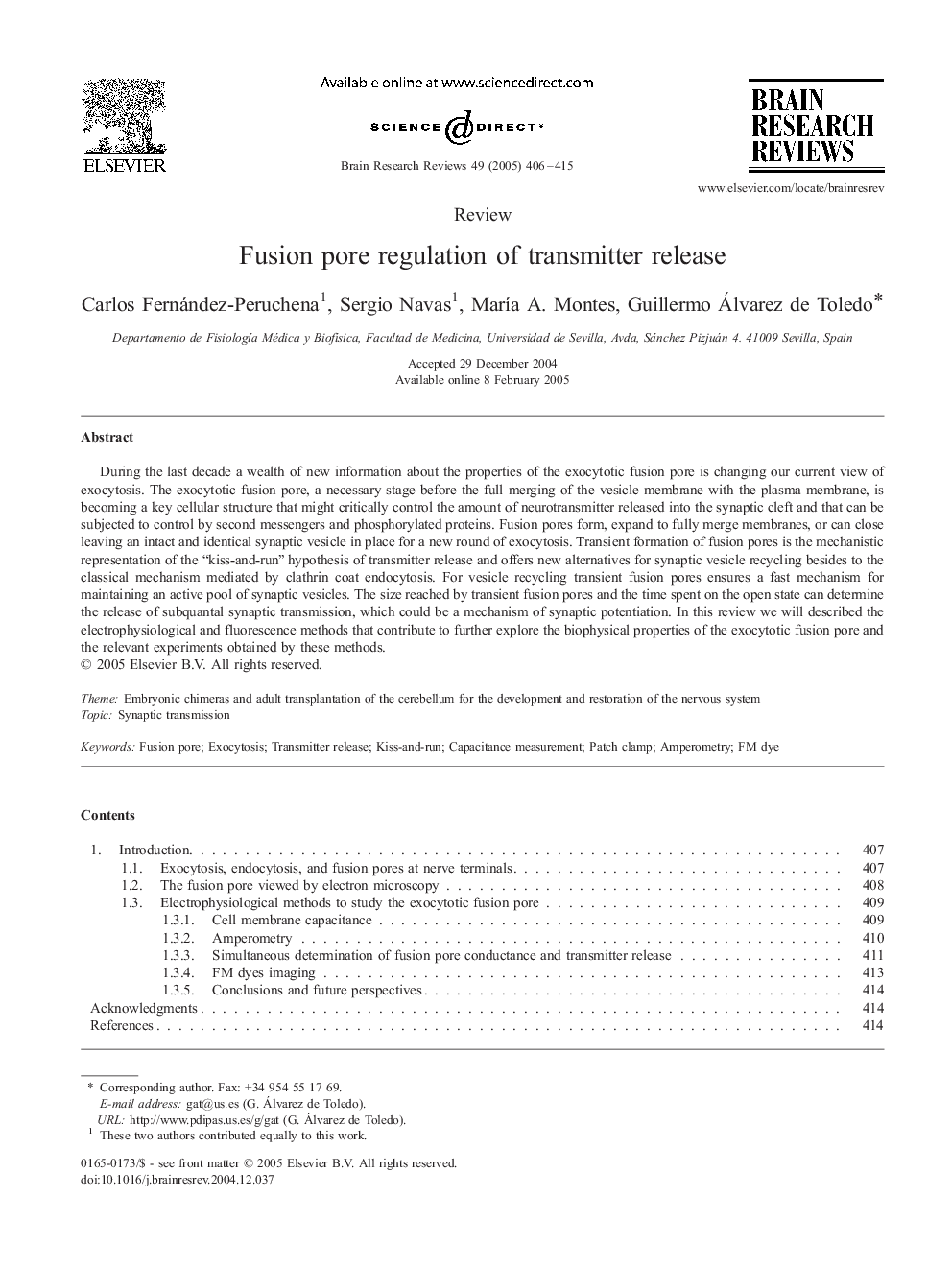| Article ID | Journal | Published Year | Pages | File Type |
|---|---|---|---|---|
| 9423094 | Brain Research Reviews | 2005 | 10 Pages |
Abstract
During the last decade a wealth of new information about the properties of the exocytotic fusion pore is changing our current view of exocytosis. The exocytotic fusion pore, a necessary stage before the full merging of the vesicle membrane with the plasma membrane, is becoming a key cellular structure that might critically control the amount of neurotransmitter released into the synaptic cleft and that can be subjected to control by second messengers and phosphorylated proteins. Fusion pores form, expand to fully merge membranes, or can close leaving an intact and identical synaptic vesicle in place for a new round of exocytosis. Transient formation of fusion pores is the mechanistic representation of the “kiss-and-run” hypothesis of transmitter release and offers new alternatives for synaptic vesicle recycling besides to the classical mechanism mediated by clathrin coat endocytosis. For vesicle recycling transient fusion pores ensures a fast mechanism for maintaining an active pool of synaptic vesicles. The size reached by transient fusion pores and the time spent on the open state can determine the release of subquantal synaptic transmission, which could be a mechanism of synaptic potentiation. In this review we will described the electrophysiological and fluorescence methods that contribute to further explore the biophysical properties of the exocytotic fusion pore and the relevant experiments obtained by these methods.
Keywords
Related Topics
Life Sciences
Neuroscience
Neuroscience (General)
Authors
Carlos Fernández-Peruchena, Sergio Navas, MarÃa A. Montes, Guillermo Álvarez de Toledo,
